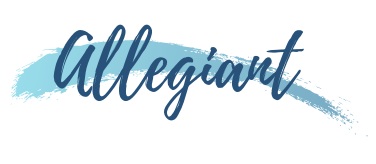Paying Down Debt
The average household consumer debt in the US currently sits at approximately $67,000.
Whether this consists of student loans or credit card debt, most of us are facing the same issue: the high-interest rates associated with debt can make it incredibly difficult to pay off. Luckily, there are a few popular methods that have helped many on their journey to be debt-free. Let’s get into it.
Avalanche
The avalanche method assumes that you have multiple sources of debt. These might be credit cards, student loans, or car loans, for example. It works by encouraging you to pay off the minimum monthly amount across all your debt. Then, any spare or leftover money would be used to pay down the debt with the highest interest rate first. In theory, this should save you the most money in terms of debt growth through interest.
Here’s an example of how it works:
Credit card debt: $12,000 at 22%
Student loans $60,000 at 6%
Car loan: $5,000 at 4%
In this example, you would make the minimum payments across all three accounts. Then, you would focus spare funds on the credit card as this has the highest rate of interest. Once the credit card is paid off you use that full monthly amount you were paying - the minimum and the extra - and apply it to the next debt.
One benefit of this method is that it becomes more effective with higher debt, as the avalanche method can reduce the time it takes to pay off. Another advantage is that this method saves the most in interest payments. However, because you are tackling the loans by interest order (rather than the amount borrowed), you may lose motivation as the process continues. For example, if you start with a large debt, it may cause feelings of frustration that there is still so much to tackle before you can move on.
Snowball
The snowball method is an alternative to the avalanche. Instead of focusing on paying down the debt with the highest interest rate, you’ll be paying down the smallest balance first. You’ll be making minimum payments across all your debt channels, so this method does mean you pay more in the long term.
Here’s an example of how it works:
Credit card debt: $12,000 at 22%
Student loans $60,000 at 6%
Car loan: $5,000 at 4%
In this example, you would focus all of your money on your car loan first. The major advantage of choosing the snowball method is that it can really aid your motivation and ability to stick to the plan. This method has psychological benefits in play: when we are able to tick off one of the debts within the list quickly and easily, it increases our motivation to complete the rest of the tasks. However, as mentioned, you will end up paying slightly more than in the avalanche method above. You are sacrificing a few dollars in order to give yourself more of a chance of completing the challenge.
Pro-Rata
Pro-rata in a debt repayment context refers to paying your debts down in proportion to their overall size. In this method, you would focus on all channels of debt at the same time, but spread your funds equal to the proportion of the debt.
You would calculate what percentage (from 100%) each loan proportionately holds. Using the previous examples, the total debt equates to $77,000, where credit cards are approx: 15%, student loans are: 78% and car loans are: 7%.
Let’s say you have $1,000 to use towards paying down debt per month. You would pay this in the same proportions as above:
Credit card debt: $150
Student loans: $780
Car loans: $70
In this example, we are forgetting about interest rates but there are many online calculators that you can use to determine your exact pro-rata payments.
The benefit of paying down debt using the pro-rata method is that it means that, in theory, you should pay off all streams of debt at the same time. The downfall, however, is that this form of debt repayment would take a lot longer than both the snowball and avalanche methods. While it is calculated and methodical, it can be really slow and hold back your cash from other purchases for longer.
So, which method of debt repayment is best suited to your situation? Why don’t you get in touch with me today to create a plan around paying down your debt.

